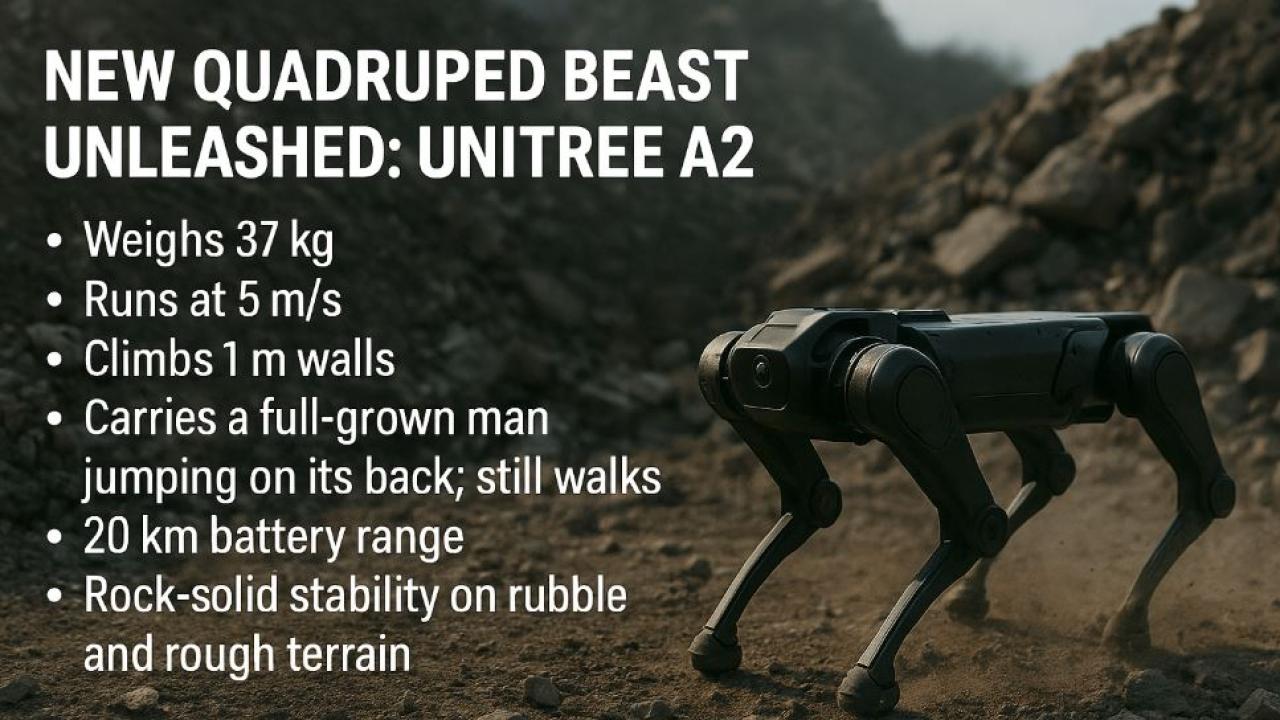How Unitree Stellar Hunter Quadruped Robot Redefines Agility and Carries Up to 100kg Loads

Unitree’s Latest Quadruped Redefines Robotic Agility and Load Capacity
A groundbreaking development in robotic mobility has emerged with the recent introduction of a highly advanced four-legged machine by Unitree Robotics. This new model, identified as the Stellar Hunter edition, demonstrates exceptional physical capabilities that set a new benchmark in the field of dynamic robotic performance. Designed to exhibit remarkable dexterity, this machine can execute complex maneuvers such as backflips and various balancing acts on its limbs, showcasing a level of agility rarely seen in robotic quadrupeds.
Beyond its acrobatic skills, the machine attains impressive running speeds reaching five meters per second, enabling swift navigation across terrains. Notably, it can balance and leap using front or rear legs individually, and even maintain balance on a single leg. Its design supports a substantial payload capacity, allowing it to carry weights up to 100 kilograms. This blend of agility, speed, and strength positions it as a versatile candidate for tasks that require both mobility and heavy load transportation.
In a move to further enhance operational versatility, a variant equipped with wheels integrated into its legs is under development. This hybrid design aims to combine the advantages of legged locomotion with wheeled mobility, potentially offering improved efficiency and speed on certain surfaces. While specific pricing details remain undisclosed, industry observers anticipate a higher cost point relative to Unitree’s earlier model, the Go2, which is priced starting at $1,600.
Technological Highlights and Capabilities
The mechanical construction incorporates lightweight yet durable materials such as aluminum alloy and high-strength engineering plastics, contributing to a total weight of approximately 37 kilograms. This facilitates extended operational ranges, with the unloaded version capable of covering up to 20 kilometers continuously. Such endurance is supported by a sophisticated dual-battery system that allows for seamless battery swaps, ensuring uninterrupted functionality during prolonged missions.
Equipped with state-of-the-art sensory technology, the platform features multiple industrial-grade LiDAR sensors positioned at the front and rear, paired with high-definition cameras and lighting systems. These sensory arrays provide real-time 3D spatial perception, crucial for navigating complex terrains and avoiding obstacles. The integration of advanced onboard computing units enables rapid processing of environmental data, empowering the device to adapt its motion precisely and maintain stability during high-speed maneuvers or when supporting heavy loads.
Implications for Industrial and Field Applications
The robustness and agility of this innovation open doors to numerous commercial and industrial applications. Potential domains include logistics support in challenging environments, industrial site inspection, and emergency response operations where maneuverability and payload capacity are critical. Its ability to traverse steep or irregular terrain while carrying substantial weight makes it a candidate for deployment in scenarios inaccessible to traditional wheeled robots.
Moreover, the development of a wheeled-leg version signals an intention to cater to varying terrain requirements, offering users a choice between legged mobility and faster wheeled travel depending on operational context. This modular approach highlights a commitment to versatility and optimization across diverse use cases, reinforcing the platform’s position as an adaptive robotic system.
Although the unit’s commercial availability timing and pricing structures have yet to be confirmed, precedents set by earlier models indicate a premium valuation commensurate with its enhanced functionality. The confirmation of further details is anticipated to provide clearer insights into market positioning and accessibility.
